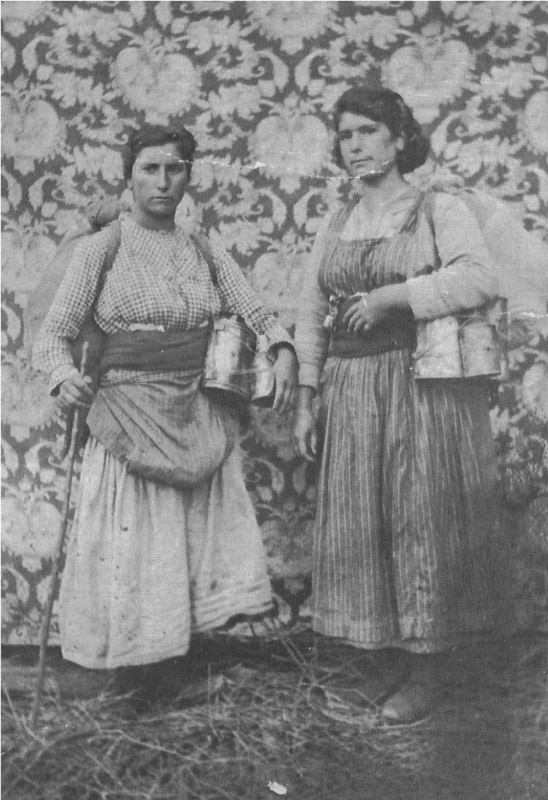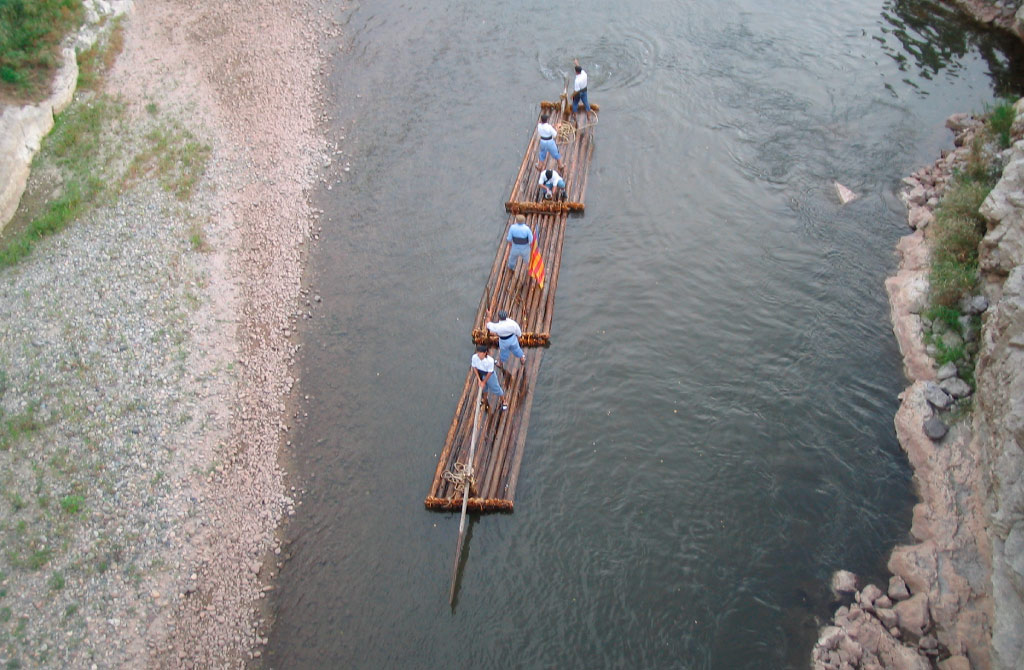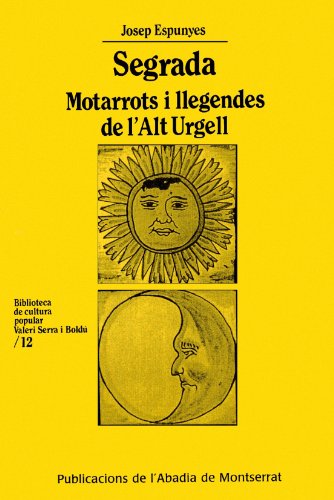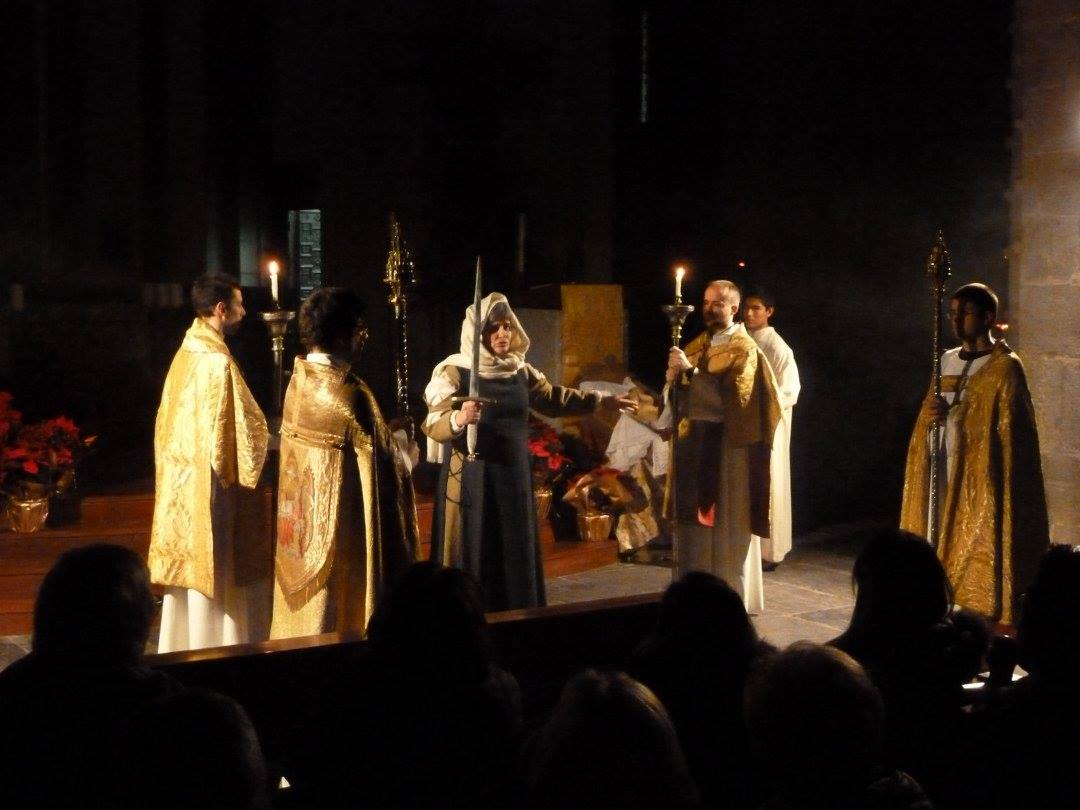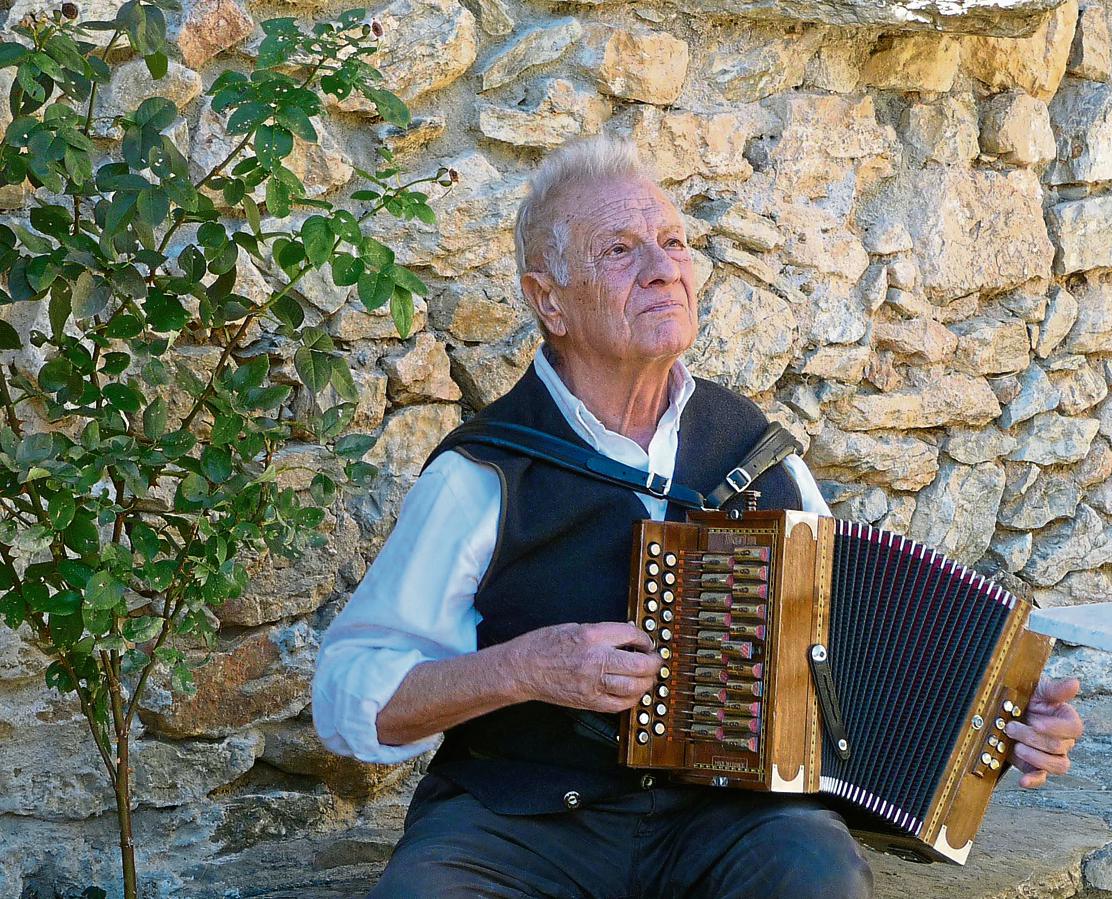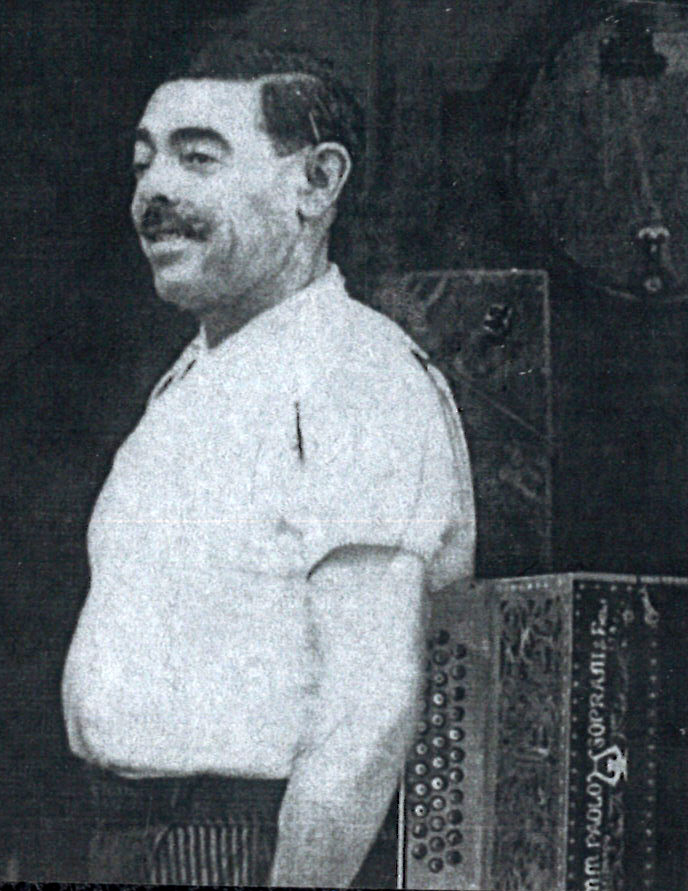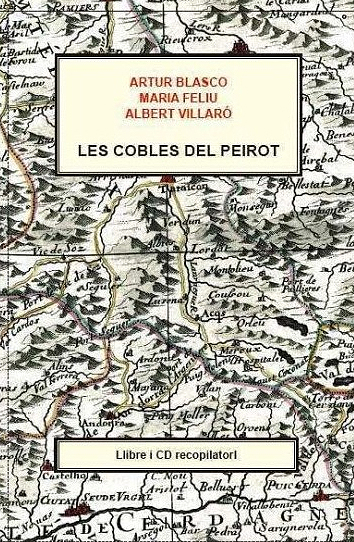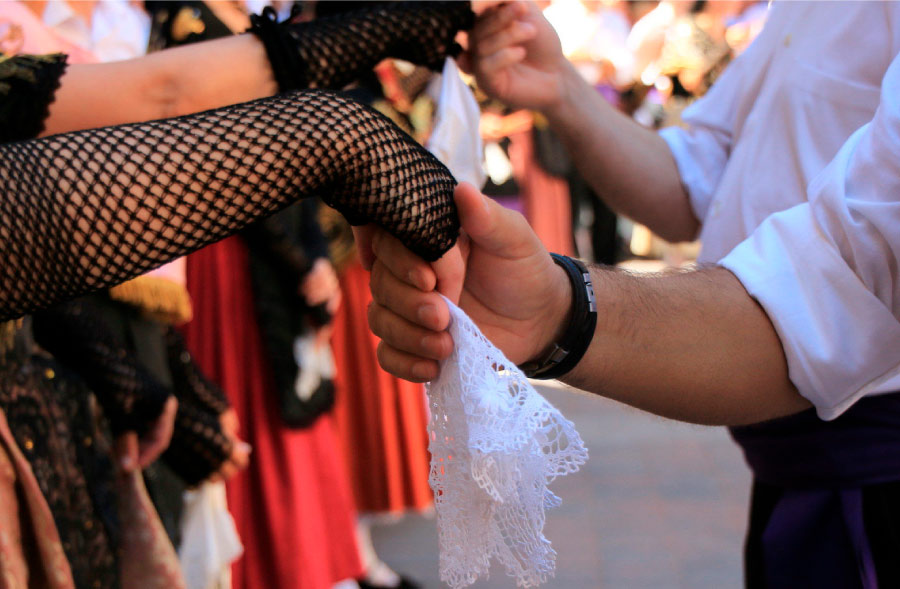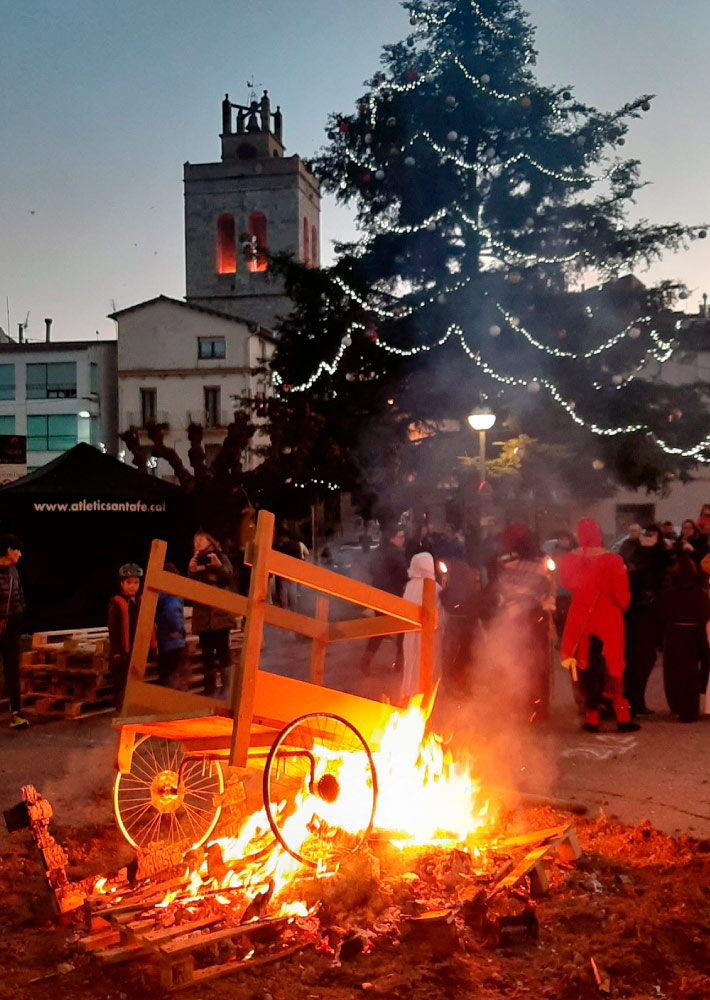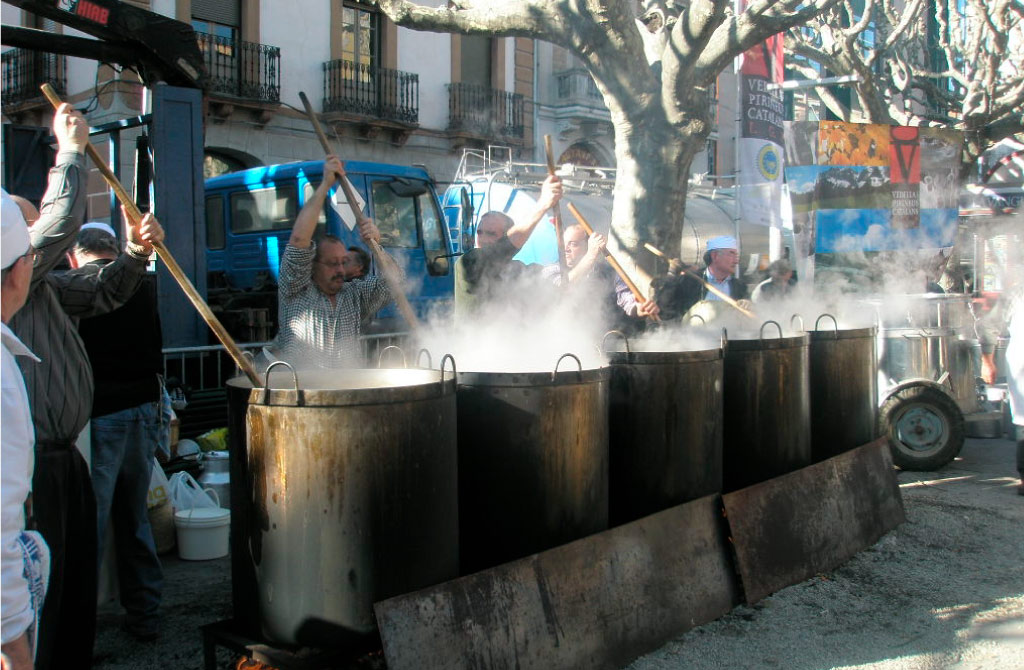INTANGIBLE CULTURAL HERITAGE OF THE PYRENEES AND THE LANDS OF LLEIDA
L'ALT URGELL
ACCORDIONS BY THE RIVER SEGRE
This is the very heart of the Pyrenees. Visitors will know this because they will hear its music: a melody with two voices: that of the River Segre, as it gains momentum along the last bends of its journey through Urgellet, before descending to the plain below; and that of the button accordions (melodeons), which almost every family in L’Alt Urgell treasures as a keepsake, having been handed down from previous generations. Visitors will quickly be seduced by this comarca (local district), which still holds dear the values that are so much a part of the history of the Pyrenees.
The journey
The journey through L’Urgell reveals a land of a thousand contrasts. From the gentle plains of Urgellet to the untamed valleys of La Vansa and Cabó and the cultivated terraces along the river basin of the Valls de Valira and the Ribera d’Urgellet. This is a world where tradition is valued and where padrins (older residents) are lauded as the custodians of culture, at dances and festivals which have managed to survive the passing of time, despite industrial and technological advances. This is a world where farming is carried out unwaveringly. Meadows, animals, farms, workshops and cheese shops are all part of the same story. Respect for tradition is a religion in Tuixent and the La Vansa valley, where visitors will discover the magical world of the trementinaires (turpentine oil peddlers), who used to travel around the country, peddling age-old remedies extracted from nature’s nectars. Every year, as the month of May comes to a close, a festival is held in honour of these women. Around the soothing flames of a blazing bonfire, visitors can then relax a little and participate in the dances and festivities. Likewise, in the villages on the banks of the River Segre, they can pay homage to the raiers (river rafters) who used to transport logs up and down the fast-flowing river. Coll de Nargó was once one of the main centres of the logging trade and its people remember the raiers every summer, in a festival that is not only a tribute to previous generations, but also a celebration of the land itself.
L’Alt Urgell is also a world where fantastic tales and myths are passed down from parents to children. It is a place where secrets are told around the dinner table, such as the legends of the minairons de la Guàrdia d’Ares, who are small fairy-like creatures whose exceptional strength means that they can carry out even the heaviest of tasks. While this is a community that respects its past, it is also one in which there is a healthy mistrust of neighbours, and this is most evident in the motarrots, or nicknames, by which they refer to each other. This is village life in its purest form, which is an elusive gem, and the time that visitors spend there, with the local people, will make them realise how much this reinforces the region’s character.
The music that runs through these valleys, and which can be heard echoing off the walls of Cadí, is that of the button accordions, which the old people have managed to preserve. Just when it seemed that this tradition was about to be lost forever, a research project, carried out by Artur Blasco, managed to save it from extinction. Today, hundreds of children and young people once again dance in the village squares to the strains of this old instrument. In fact, El Gall Negre (The Black Rooster) has become a popular song among both young and old and is a veritable anthem in this corner of the Pyrenees and fosters a strong sense of belonging. The song was composed by Agustinet de Pallerols, with the help of local xolladors (sheep shearers) and was originally dedicated to the chaplain of Solanell. The mischievousness of the song is like a war cry resounding from the dining rooms of L’Alt Urgell. This is how people often feel when listening to the cobles (songs) of Peirot, which are a reference to the oral history of the Pyrenees and a reflection of people’s desire for justice. In the Cathedral of Santa Maria de La Seu d’Urgell, visitors will be invited to another moment of musical magic, with the Cant de la Sibil·la (Song of the Sybil), which was rediscovered in 2011 and derives from one of the most festive of Christmas traditions.
A journey through the Intangible Cultural Heritage of the comarca is also an invitation to discover the festival days in each village square: the days when local festivities make the Pyrenees feel like one long holiday. The Ball Cerdà of La Seu d’Urgell, which is performed for the Festa Major (Main Local Festival), at the end of August, will transport visitors back to a time where courtship used to follow a most rigorous of protocols. Young and old alike form into pairs and dance to a chant that invades the square and the old town in a nod to times gone by. In similar fashion, but under the shadow of night, Organyà celebrates its nit de les llegendes (night of legends) with the Dansa del Cavallot, in which, on Christmas Eve, a red, horse-faced figure preforms a mocking dance in the Plaça de l’Església (Church Square). This is followed by the Crema del Carro (Burning of the Cart) in the Plaça de les Homilies (Homilies Square). All of this forms part of a reenactment of medieval traditions, linked to ancestral rites that were celebrated at the winter solstice.
To recover from this intense journey of emotions and experiences, and to renew their strength, at La Seu d’Urgell, visitors can sit at the table and enjoy the Calderada de Sant Antoni: a special soup-stew made to celebrate for St Anthony’s Day. The members of the confraria (fraternity) seem to take over the Passeig Joan Brudieu and the whole town, while people quickly form ordered queues and are apparently bewitched by the smell of the stew, which seems to permeate almost everything in this corner of the world, from the River Valira to the River Segre. The large pots, full of delicious meat and sauce, bring to an end the festival of the Tres Tombs (Three Circuits) and the Pujada al Pal (Climbing of the Pole), leaving everyone wanting more and knowing that they will one day return to L’Alt Urgell.
